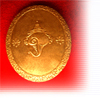 |
Articles Papanasam Sivan The Tamil Tyagayya Dr. S. Bhagyalakshmi |
Sri. Papanasam Sivan rightly and affectionately addressed as ‘Tamil Tyagayya’ is one of the pre-eminent composers of this century. Blessed with long life, he lived like a wandering mystic, enriching the repertoire of classical music by his priceless compositions. As a child he was known as Ramayya. Since he was an ardent devotee of Lord Siva, and since he used to sing Bhajans in praise of Lord Siva especially in Papanasam, he came to be known as Papanasam Sivan. His output has been prolific comprising of 500 kritis, excluding the film songs, which exceeded 800. The title ‘Tamil Tyagayya’ was conferred on him by the great Simizhi Sundaram Iyer, when he heard Sivan singing the song ‘Unnai Thudikka Arulthaa’ in Kuntalavarali raga during the Tyagaraja Ratotsavam at Tiruvarur.
The bulk of Sivan’s compositions are in Tamil, his mother tongue. He has also composed some kritis in Sanskrit. He started composing at the age of 20. He drew inspiration from the eminent Tamil composer Nilakanta Sivan, who was his guru. Papanasam Sivan learned and popularised many compositions of Nilakanta Sivan. His language is very simple, elegant and moving. His compositions deal with the various aspects of Bhakthi and reveal different bhavas. Let us analyse two compositions. The famous composition ‘Enna Thapam’ in Kapi raga and Adi tala picturises the amazement at the greatness of the Divine infant Krishna and the good fortune of mother Yesoda who fed, cradled and punished this child. In Bhagavatha, Yesoda is described as the luckiest among lucky mothers (dhanya dhanya) as she is given to feed, fondle and even punish the saviour of the world, whom the great Munis attain only through Thapas. Even Brahma & Indira envied Yesoda.
The musical and literary beauty of the composition is praiseworthy. The essence of Kapi raga is revealed throughout this composition. The affection of a mother towards her child is revealed through the sahitya. The lyrics are so beautiful and ideal and has given ample scope for abhinaya. Hence dancers present this as a pada. The fondling and cradling of Krishna, his childhood pranks, construction of the world, tying of Krishna to the mortar, etc. are presented through Abhinaya.
Entirely different from the above composition in its bhava is ‘Nanoru Vilayattu Bommaya’ in Navarasa Kannada. Here the composer is asking the universal mother, “Oh Mother of the universe! am I a toy for you to play with? I have suffered enough in this world. Are you are not moved by my pitiable condition? I am exhausted, I can play no more. I have submitted fully at your feet.” This composition has such a depth of feeling which moves our hearts. The listener’s heart melts at the pathos and anguish in the song. The selection of raga Navarasa Kannada also is very apt. The Sancharas reveal the underlying bhava of the composition to its maximum.
Many of his compositions have become favorites with singers and listeners. His repertoire include diverse musical forms like Varna, Kriti, Padam, Ragamalika Padavarnam etc. Compositions like Karthikeya (Thodi), Kaapali (Mohanam Kaanakkankodi (Kambhoji), Iniyorukanam Gajavadana (Sriranjani), Ka va va (Varali), Nekuruki (Abhogi) Paratpara (Vachaspathi), Dayavillaya (Kharaharapriya), Ayyappan panivam (Arabhi), Karpagame (Madhyamavathi), Sivakamasundary (Mukhari), Isane, In the (Chakravakam) etc are ideal examples of such kritis.
Papanasam Sivan has enriched the field of dance by his dance compositions. Idathupaadam Thookki (Khamas), Anandanadamidum (Kedaragaula), Nadarajanun Thiru (Vasantha), etc are ideal dance compositions. The brisk Madhyamakala sahitya and cholkettus enable the dancer to preform Adavus. The selection of Ragas like Khamas. Kedaragaula, Vasantha are highly suitable for dance. In addition Sivan has to his credit five Ragamalikas out of which one is in 23 ragas. They are ‘Karpakavally’, ‘Kosalai Pudalvana’ ‘Maalaisutruvan’, ‘Marajanaka and Madhusudhana’.
The padavarnams in Mayamalavagaula and Pantuvarali are excellent as dance varnas. These Compositions provide full scope for abhinaya and for performing jathis. Sivan has composed in both major and minor ragas. The popular ragas handled by him are atana, Anandabhairavi, Abhogi, Abheri, Bhairavi, Begada, Bilahari, Dhanyasi Hamsadwani, Hindolam, Kapi, Kalyani, Kharaharapriya, Kambhoji, Khamas, Mayamalavagoula, Pantuvarali, Sangarabharanam, Varali, Thodi, Suritti, Mohanam, Vasantha, etc. He has also composed in apurva ragas like Paras, Ramapriya, Balahamsa, Sivaranjani, Karnataka Bihag. He has to his credit, some pieces in Hindusthan Bihag, Vrindavana Saranga etc. His padas are unmatched in devotional fervour. The diversity, depth and quality of his works prove the range of Sivan as a composer.
Like Saint Tyagaraja’s Kritis Sivan’s compositions are saturated with Bhakthi. The predominant feature of all his songs is the raga element and the fine blending of sangita and sahitya. The raga rupa trait in his works has no parallel in contemporary compositions. Tamil language with its inherent genius for music and felicity ideally suits his purpose of presenting ideas with feeling and emotion. The quantity of his output is quite substantial but there is not a single song or bhajan which lacks in devotional fervour or sincerity of feeling.
On a comparison with Saint Thyagaraja we can find that the title ‘Tamil Tyagaraja conferred upon Sivan is very apt & highly suitable. As individuals and composers, both occupy prominent ranks as Bhaktha vaggeyakaras. Both of them were wandering mystics, living the humble life of Sanyasis. They never cared for wealth, fame or position. Bhakthi is the predominant feature in the compositions of both. The underling philosophy of both is ‘Nishkama Bhakthi’. Sree Rama is the Ishtadevatha of Saint Tyagaraja while Papanasam Sivan adopted Siva as the Ishtadevatha in most of his compositions. We find different rasa / bhavas in the works of these composing musical compositions is a three-pronged process – writing, tuning and singing. But Papanasam Sivan was adept in all the three. He combined in him all the factors that make an ideal vaggeyakara. Thyagaraja has to his credit many group kritis whereas we do not come across group kritis in Papanasam Sivan’s compositions. In both we find the ideal blending of Bhakthi with Sangita.

